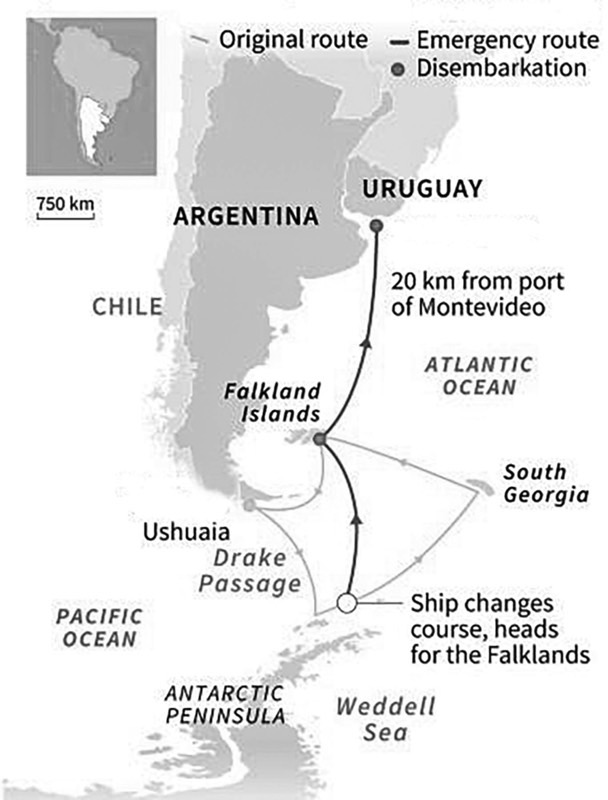Scary Study Shows Just How Dangerous The Coronavirus Still Is
- Coronavirus transmission is still a real problem, even if the spread has been contained in certain regions.
- A new study shows that more than 80% of COVID-19 cases on a cruise ship were asymptomatic. It started on the eighth day into the journey with a single patient who was isolated. By day 32, 128 of the 217 people on board tested positive.
- The cruise had various safety measures in place, as it departed to its destination in mid-March, at a time when countries were already locking down to limit the spread.
After five months of fighting the novel coronavirus, it should be clear to everyone how dangerous this virus can be. Sadly, that's not the case, and many people still choose to ignore the risks. As it stands, there are two reasons COVID-19 is so dangerous. First, it spreads with ease, and it does so quietly. Second, no drug or vaccine can significantly limit its spread or prevent complications, although many drugs show promise.
As long as we don't have medicine to fight the virus effectively, we should stick to social distancing for as long as possible to reduce the transmission risk, even if the economy is reopening. And when we're out, we need to wear face masks, especially in crowded places. A new study looking at specific COVID-19 patients further confirms the dangers of the disease, proving that the majority of people who got the coronavirus can be asymptomatic.
The CDC said a few days ago that as many as 35% of all coronavirus infections are asymptomatic. But that number can be even higher in the right conditions. Scientists in Australia looked at the COVID-19 evolution aboard a cruise ship that departed Argentina in mid-March, at a time when many countries were in the process of declaring coronavirus-related national emergencies.
The trip was supposed to last 21 days, but some passengers ended up spending 32 days on that ship. Of the 217 passengers and crew on board, 128 ended up testing positive. Of those, only 19% were symptomatic. That means 81% of patients were asymptomatic, which seems incredible. This study makes it clear that confined spaces, like the cabin of a cruise ship, offer the perfect conditions for a viral infection like the coronavirus to spread, despite the mitigation deployed.
Published in Thorax, the study explains that the cruise banned passengers that came from any of the COVID-19 hotzones as of mid-March. The list included regions like China, Macau, Hong Kong, Taiwan, Japan, South Korea, and Iran. Anyone who visited those regions in the three weeks before the cruise was not permitted onboard.
The rest of the passengers were screened for symptoms and fever, and multiple hand hygiene stations were placed inside the ship. Regular body temperature checks were performed in the days that followed departure. The cruise industry had already learned some lessons from the initial outbreaks. In mid-February, the Diamond Princess docked in Japan, and passengers were not allowed to leave the ship, as hundreds tested positive.

The first suspected COVID-19 case came on the eighth day after leaving Argentina. Isolation protocols were put in place, which included confinement to cabins and the use of surgical masks. Interaction with febrile patients was done using full personal protective equipment, and N95 masks were used when contacting passengers in their cabins.
More and more cases followed as the ship tried to dock back in Argentina. Access was refused, as the country shut off its borders. The study explains that the vessel decided to alter its course on day three, in response to the fact that several states were enacting travel bans.
The ship reached Uruguay on day 13, and six passengers and crew who had fevers were given COVID-19 tests. The results were negative on day 14, but authorities refused to let the ship dock until nasal swabs were performed. By day 20, the Uruguayan Ministry of Health provided testing to everyone on board, though several passengers had been evacuated previously after developing complications consistent with COVID-19. By day 27, one of the ship's two physicians had to be evacuated after developing hypoxemia, or a low concentration of oxygen in the blood secondary to the infection. All of the evacuated passengers tested positive for COVID-19.
Australian passengers left the boat on day 28, with New Zealand travelers evacuating four days later, as Uruguay secured passage to those nations.
The researchers concluded that "the prevalence of COVID-19 on affected cruise ships is likely to be significantly underestimated, and strategies are needed to assess and monitor all passengers to prevent community transmission after disembarkation." They also noted that some passengers didn't develop symptoms until day 24, despite the cabin isolation measures. They also highlighted the fact that passengers sharing a cabin recorded positive and negative results, which could signal a problem with PCR testing as well.
COVID-19 transmission inside a cruise ship might be facilitated by the nature of the space shared by so many people, and might not be indicative of the spread of coronavirus in the real world. But the study really puts in perspective the fact that, if given a chance, the coronavirus can spread with ease. New policies for social distancing, the use of face masks, as well as contact tracing will be required to safely open up the economy.
